
I recently had the good fortune to be working in Glen Quoich on three consecutive days. And on each of those occasions I took time to sit quietly among the veteran pines, with my coffee and lunch, and take-in the atmosphere of regenerating Caledonian woodland.
It’s one of the most restful places I know. Indeed when we were released from our local authority lockdown limits during the Covid pandemic, this is the first place I visited. Now managed by the National Trust for Scotland, where better to be restored than the very place where restoration hangs in the air?

Given its outrageous beauty, not a single visit goes by when I don’t imagine what it might have sounded like, what it might have looked like and felt like, if there was a busy public road up this quiet glen.
It seems ludicrous now, but it very nearly happened because of grand plans in the 1960s to turn Mar Lodge Estate into a ski resort.
The Grand Plan
In 1962, the estate was bought by two Swiss brothers from Lausanne, Gerald and John Panchaud. They immediately set about establishing a ski centre on the modest 668m hill immediately behind Mar Lodge, costing them an undisclosed sum of ‘over six figures’. Even £100,000 in 1963 would cost about £1.7m now, so it was a huge investment.
Mar Lodge would have two tows (the longest 2050ft in length and gaining 600ft in height) carrying 1400 people per hour, a ‘Ski trail’ which went through woodland (a unique offering in Scotland), parking for 1000 cars, two self-service restaurants, ski hire, a Ski School d’Ecosse, a creche with a nanny, and even a chapel offering special services for skiers.
Future plans included a floodlit curling and ice rink, and an upgrade to a chairlift, but the most notable feature was the snowmaking facility. Ten guns would cover 20 acres with 5600 cubic feet of snow per hour, making it the biggest artificial snow area outside the USA.
Given the innovation and enthusiasm, the new resort generated a lot of interest. ‘A new mecca for skiers’, proclaimed the Evening Express. ‘Skiers in the Northeast need no longer look anxiously at the weather conditions – the snow will be there for them all the time’.
Three bus services were set up from Aberdeen, and the famous ballroom was set up so that visitors could ‘dance in the afternoons and evenings to the latest hi-fi music’. The scene was set for a 21st December 1963 opening. All they needed was for winter to show up.
It certainly had done so in previous years, which is why the Scottish ski industry got going in the first place. Moreover, the two previous winters both had above average snowfalls, and 62/63 was famously one of coldest and longest winters on record. But even if the snow didn’t turn up, it would be okay because as the estate manager said at the time:
’The climate of the district enables the snow machinery to operate effectively for the entire length of the skiing season in Scotland’.
Nobody could accuse the Swiss brothers of betting on the wrong horse. They had thought of everything and there was good reason to be optimistic. The press at the time certainly shared the excitement, given the passion and dedication that everyone was clearly putting in.
Too warm!
Scanning through the scrapbook of press cuttings that were dutifully collected by the estate at the time, the subsequent fortunes of the resort are laid bare.
It opened as planned and by all accounts there were often good crowds and good skiing, but on 4th January 1964, the Press & Journal is reporting that ‘the royal skiing holiday on Deeside has been cancelled for want of snow’. Teenagers, Charles and Anne, had apparently been due to ski at Mar Lodge but it was ‘Too warm!’, went the headline. ‘Not even a flake of snow to be seen’.
A brief mild spell was inconvenient but certainly not a disaster, and spirits were still high. The Aberdeen Ski Club scheduled a Giant Open Slalom for February.

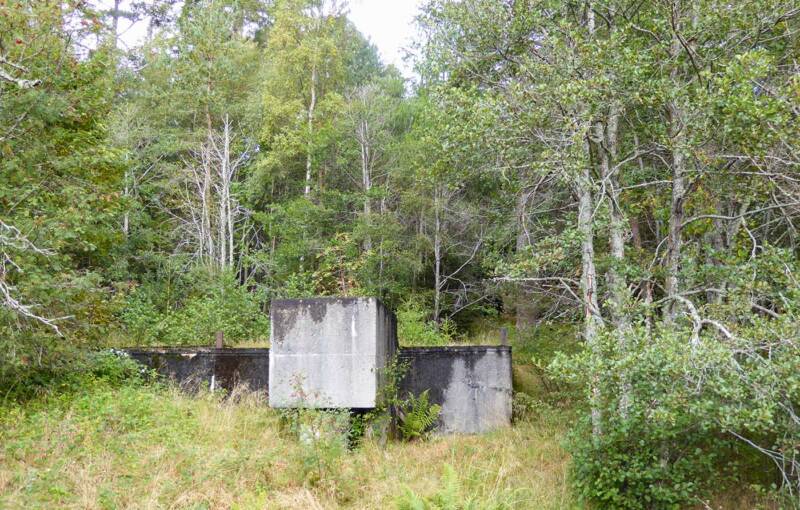
However, by mid February the Scottish Daily Express, in its summary of snow conditions says: ‘At Mar Lodge it’s been the same story each weekend: ‘There is no snow and the weather is too mild for the snow machines to operate’’.
Then, on 24th February, two whole months after it opened, the P&J joyously announces ‘at long last, snow at Mar Lodge’. Such joy appears to have been brief, because on 19th March a Scotsman article notes how the high corries of the Cairngorms have been empty of snow all winter. Heavy snow might save the season higher up, but not so lower down, for ‘On Deeside there seems little prospect of skiing this weekend’.
Into a second season, and by February 1965 the Scottish Daily Express is printing headlines of ‘CLOSING?’, citing various rumours of staff being given one week’s notice, the lodge closing down, or that Billy Butlin is going to buy the Panchauds out.
‘I’ve heard those rumours and it’s rubbish’, says the estate.
There were heavy falls of snow in December 1965 but by 1966 the writing appears to be on the wall. The P&J is decisive in its judgement, and of the snow making machines in particular it says. ‘They proved a complete failure’.
I’m not sure what the problem with the machines was beyond the lack of cold temperatures, but there does seem to have been disappointment in-house with how they performed even when it was cold. A subsequent P&J column in October ‘67 reports how the estate has admitted the venture has failed.
Undeterred, the Panchauds had set their sights higher to pursue a big mountain option. And they weren’t alone.
Too few runs
The ski industry had humble beginnings in Scotland, with clubs using tractor engines and rope tows. But following the opening of the first permanent ski lift, at Meall a’ Bhuiridh (Glencoe) in 1956, it grew rapidly.
Just six years later there were three resorts, at Glencoe, Glenshee and Cairn Gorm, and by 1962, 30,000 were skiing in Scotland. Between 1962 and 1965 a tenfold increase in skiers was reported, the impact of which was noted by both local and national press:
“Too many people are chasing each other down too few runs’….said the Scotsman.
The hunt for the next resort was on, and the names and places that rattle past as you peruse ski news & features from the period make for fascinating reading.
Ben Lawers is there, journalists musing whether the hydro road could have dual use as a ski road, with access further enhanced by chairlifts. Ben Alder and the hills of Drumochter are mentioned as vague possibilities, but Braeriach is taken more seriously.
A road up Glen Einich was envisaged, from which chairlifts would whisk folk up into Braeriach’s snowy corries. A road on the hill’s southwest shoulder, up to a height of 3000ft was even mooted.
Across the Lairig Ghru, Lurcher’s Gully was another proposal, albeit more as an extension to the existing Cairn Gorm facilities. Some folk even had aspirations to push further south into the Lairig Ghru in order to open up Cairn Toul and Garbh Coire!
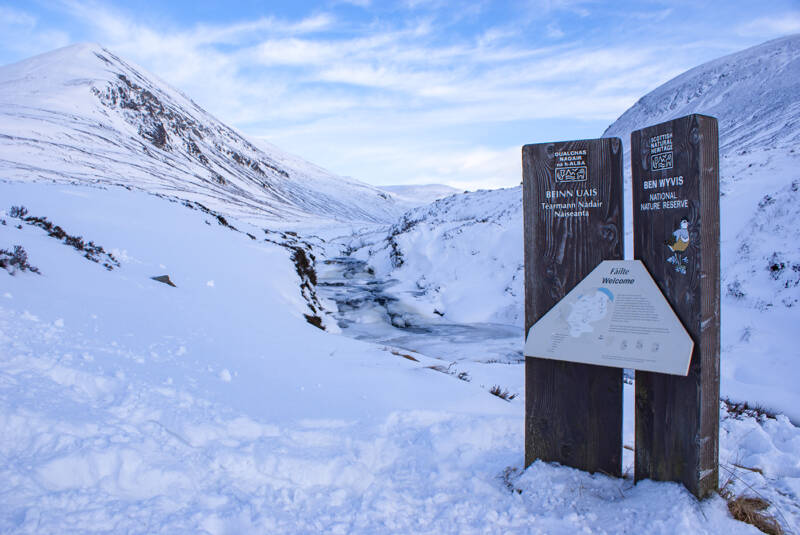
North of the Great Glen there were £750k plans for Ben Wyvis. A new 4.5 mile road would give access to an ‘alpine style’ village in Coire na Feithe Riabhaich, complete with Swiss architecture and four tows. Cromarty County Council were in favour and a feasibility report went to Highland Development Board. Nothing happened but plans resurfaced in 1981 and again in 1989, flipping between a road or a railway up the hill. Interest resumed in 2011, after the trinity of memorable winters between 2008 and 2010.
Seriously?
For those of us seeing the climate changing during our lifetimes, the idea of establishing new high altitude ski resorts in Scotland doubtless raises eyebrows.
It’s even harder to imagine that conditions were ever so promising at Mar Lodge itself to think skiing could ever work on south-facing slopes below 500m – snow machines or not.
But the fact that not one of the press cuttings I found has cast any doubt or reservation about the prospects for cold tells you all you need to know about how much has changed in 60 years. But that’s shifting baseline syndrome for you.
Press cuttings from that era speak of a strange, foreign land barely recognisable to us now, such as this eager 1969 description of a typical Wyvis winter from the chairman of the Ben Wyvis Ski Development group:
‘When it rains at low level it is always snowing at 2000ft. It doesn’t really matter what kind of weather we are having, conditions are always good.’
Or this from the Scotsman, on the Braeriach proposals:
‘The north facing corries…..from Glen Feshie to the Lairig Ghru hold snow constantly from the first falls of November until late in May’.
Yes the Scottish weather could still be unpredictable, even then, and several columns of the time acknowledge this explicitly. But that unpredictability was expressed more in relation to whether snow fell or not. Cold weather, albeit snowless, was seen as more dependable, hence the confidence in Mar Lodge.
Beinn a’ Bhuird
Snow at Beinn a’ Bhuird was considered equally reliable. A Scotsman article from 1969 said:
‘Though the slopes face the sun they hold their snow naturally well into summer. In late July I visited the area and found one run still half a mile long and over 50 yards wide in places. The snow was 6ft deep.’
‘Some of the snow never melts’, said the Glasgow Herald.
It was estimated the hill could accommodate runs over two miles in length across Coire Gorm, Avalanche Gully and Coire na Beinne, with a fall of 2000ft. The estate was confident, describing Beinn a’ Bhuird as the ‘finest potential skiing ground in Great Britain….suitable for holding international competitions’.
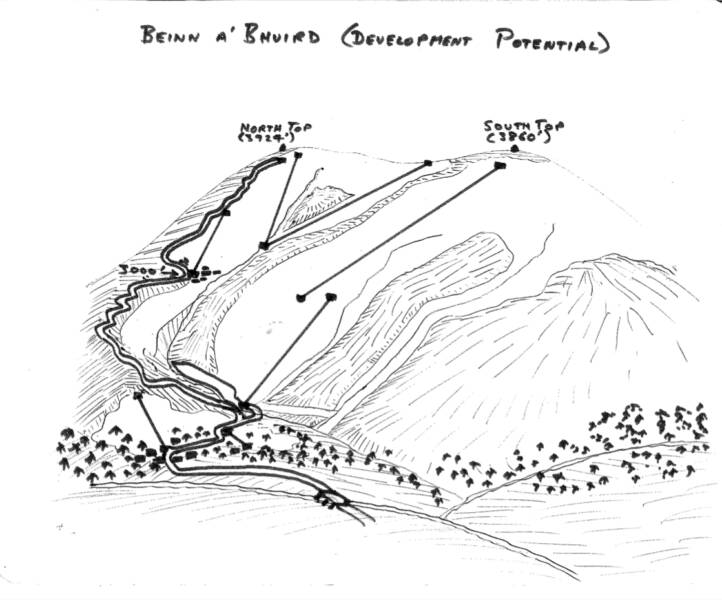
So in 1966 they (quite literally) bulldozed a rough track from the Dubh-Gleann flats up to an altitude of 3700ft on Beinn a’ Bhuird. They then ran a pilot scheme, inviting and driving ski clubs and organisations up the track in the absence of a lift or tow. The conditions were well received and there are reports of folk skiing late into June.
Judging from the column inches and the features in glossy magazines, the estate did well to garner support. There was awidespread view that Beinn a’ Bhuird could be a second Aviemore, with potential capacity for 20,000 skiers. Indeed it was observed that Beinn a’ Bhuird was in a similar situation to Cairn Gorm a decade or so earlier.
But while the estate had proof of concept, pretty much everyone acknowledged that snow in itself wasn’t enough. Facilities were needed – car parks, restaurants, even après-ski. But above all, it needed roads.
Brace yourselves!
The grand plan for roads in the Cairngorms is revealed in a ‘Technical Report’ for the Cairngorm area, written by the Scottish Development Department in 1967. It factually considers ‘New roads of primary importance’ but, brace yourselves, they make grim reading to modern sensibilities.
In support of Beinn a’ Bhuird, a column in the Scotsman said:
‘One can only bemoan General Wade’s shortsightedness in not building his road through Glen Feshie to Braemar all those years ago’.
And so first up, the report seeks to right that wrong with a new 32-mile road between Kingussie and Braemar, which would indeed go all the way along Glen Feshie, into Glen Geldie, and then along the Dee from White Bridge to Linn o’ Dee.The report notes it would make a nice touring route through the massif for summer motorists, and as one paper put it, ‘For the skiers and tourist trade it can’t come soon enough’.
Equally alarming is a new 9-mile road planned between Nethy Bridge and Glenmore, through the heart of Abernethy Forest and the pass of Ryvoan. The justification being ‘it would save skiers from Grantown at least 5 miles each way’ and would ‘form a particularly attractive route for summer visitors’.
Then there’s a 16-mile road from Tomintoul, through Glen Builg to Crathie, favoured because it could also open Ben Avon up to skiers, with spur roads onto that hill inevitably required.
Or how about the entire length of Glen Tilt, past Bynack Lodge and then joining handily with the new Feshie/Geldie road? The report states this 17-mile link between Blair Atholl and Braemar would benefit from being 530ft lower than the existing road at Cairnwell, and it notes how ‘this would link the Ben Lawers skiing area, and together with a new road across the Moor of Rannoch, that of Glencoe and Deeside.’.
Erm…a new road across Rannoch?!
Last but not least, new roads up to Beinn a’ Bhuird. Five miles of them up Glen Quoich to the base of the hill, costing £250,000 for the road, £10,000 for the car park, plus improvements to the road from Linn o’ Dee. A grand total of £365,000. The report also proposes a 3.5 mile road from Linn o’ Dee up Glen Lui to Derry Lodge, with a link road to Beinn a’ Bhuird through Clais Fhearnaig of all places!
In all, the technical report paints a picture of Playground Scotland, a grand vision of hedonistic free-wheeling snow fanatics whizzing between resorts depending on the prevailing conditions. It’s not always advisable to view the past through modern glasses…. but I’ll be frank. It’s horrifying!
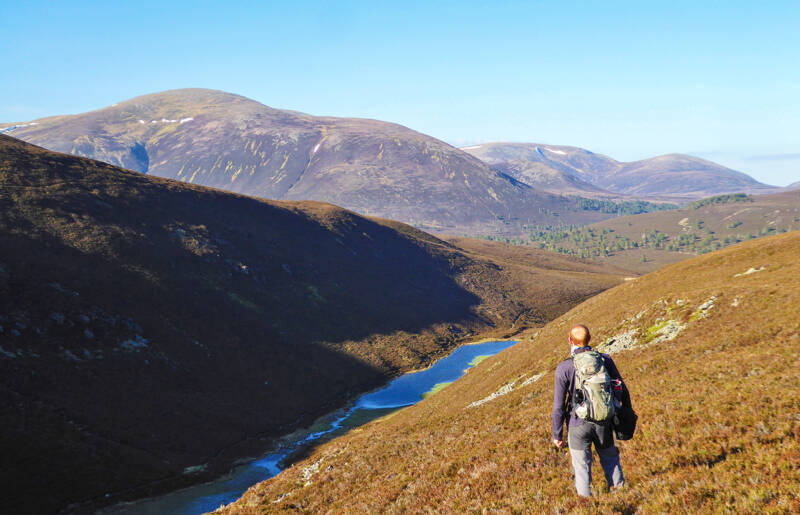
What environment?
In relation to all these plans there’s plenty of support in the contemporary press for the genuine benefits on offer, such as 12-month holiday seasons, jobs, hotel occupancy, reversal of depopulation on Deeside. But there’s scant mention of any environmental downsides.
Concessions are offered by proponents of the Braeriach plans, suggesting that a new ski road could be closed outwith the winter months to ‘allow nesting, breeding and shooting undisturbed continuance’. But otherwise the tone is depressingly similar to the one we’ve heard in just the last few weeks, where environmental designations and those organisations who uphold them are seen more as burdens than benefits.
‘It’s unfortunate that Braeriach, to which most skiers would like to access, can only be approached through Nature Conservancy land’, laments a writer in the Scotsman.
Yes, it was a different time, but that doesn’t mean there was no environmental awareness. Adam Watson appears frequently as a notable voice of caution, and while he himself noted that the skiing on Beinn a’ Bhuird was ‘very fine’, he wrote at length about his concerns for the impacts of unmonitored development in the hills:
‘The pace of development is now so fast that the conservation interests are in danger of being swept aside because it’s too late to do anything’.
‘Planners are making decisions without having the necessary data on which to base firm recommendations’.
The Cairngorm Club too, encouraged its members to read and comment on the report because it ‘presents a clear idea of the thoughts of professional planners regarding an area which is as yet practically unspoiled. Its future may now be in the balance’.
Adam Watson wasn’t opposed to development in principle, but his scientific response to the Technical Report was to say:
We should think now exactly WHICH areas should be kept free of possible developments in the future and WHY they should be; considering each part of the Cairngorms on the grounds of scientific interest, skiing potential, and outstanding value as landscape and wilderness’.
Thankfully, with the exception of the short road extension up to Coire na Ciste at Cairn Gorm, none of the big projects or road plans ever came to anything. Aberdeenshire and Inverness-shire county councils were offered 75% grants from the Government to complete the Feshie road on the proviso that it was completed within two years. But ultimately Feshie was, at least in part, saved by a ‘credit squeeze’ in the 1960s.
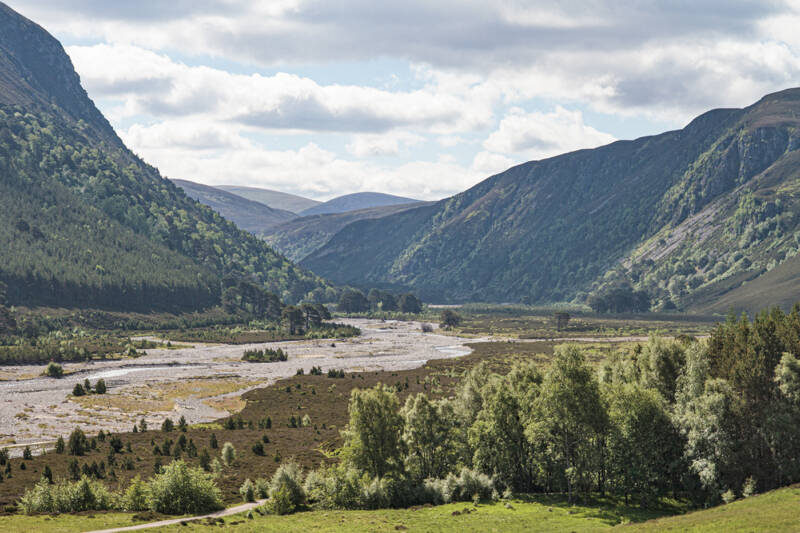
At Beinn a’ Bhuird the project entirely relied upon either Government or Local Authority funding. Aberdeenshire Roads Committee was supportive but probably less so after the Secretary of State for Scotland’s assertion that a new Quoich road would be entirely the responsibility of the local council.
The estate thought it could be done cheaper, albeit to a lesser standard, and so got two estimates for upgrading the road privately. But by 1969 the reporting in the Scotsman already sounds defeatist, apparently due to the local politics:
‘what a pity we cannot bend the line that puts the mountain on the wrong side of the Highland Development Board area’
There’s no denying that new roads would have made getting around the Cairngorms easier today, but what would future generations have lost? What would WE have lost?
The core area of the Cairngorms, encompassing Glenmore, Abernethy, Glen Feshie and Mar Lodge is among the most heavily designated parts of the UK, and one of the biggest landscape-scale restoration sites in Europe. The National Park is home to 25% of all the rare and endangered species in the UK.
Assuming the roads had been built, given their undoubted popularity they would surely all have been two-lane highways by now, and the Cairngorms as we now know them would have been completely different in character. Shorter distances from roads, less wild, more developed, busier, noisier, less hospitable to wildlife.
The Glasgow Herald ends their article about Beinn a’ Bhuird with a question:
The Table Mountain is set for dinner – but when will the guests arrive?’
For Beinn a’ Bhuird’s sake, for Glen Quoich’s sake, and above all for the Cairngorms’ sake, thank god they never did!
